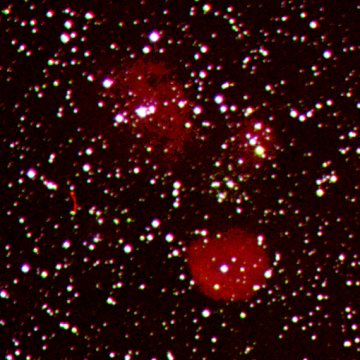Nearest stars
Visitors to this site sometimes ask me about the nearest stars to our Sun. Even the dimmest star shown on the maps on this site is 1400 times brighter than the Sun and most are quite far away.
I've occasionally thought of creating a near star map for fun, but now I see that the RECONS project have done the job for me with this map showing every known star within 10 parsecs:
http://www.chara.gsu.edu/~riedel/10pc2011.html
All that is needed is an overlay to identify each individual star. Hopefully at some point they will add something like that. (I can't because RECONS has released less than half their star data so far.)
There is a much bigger 25 parsecs map (warning slow to load) here:


